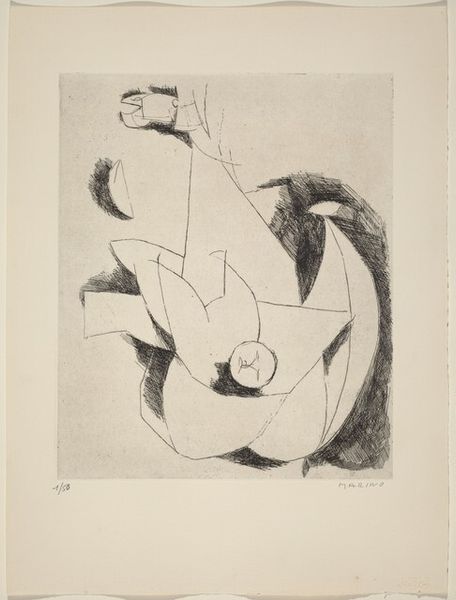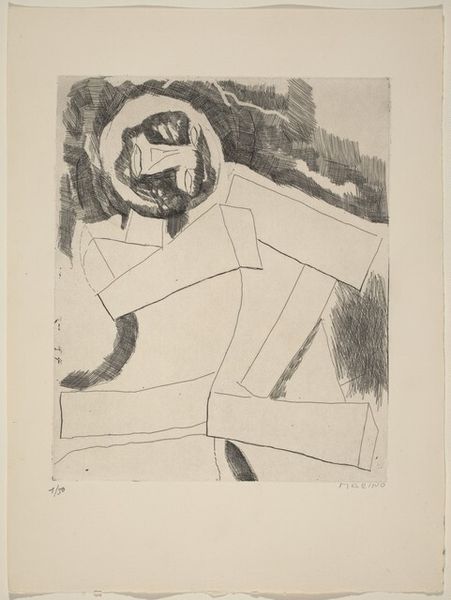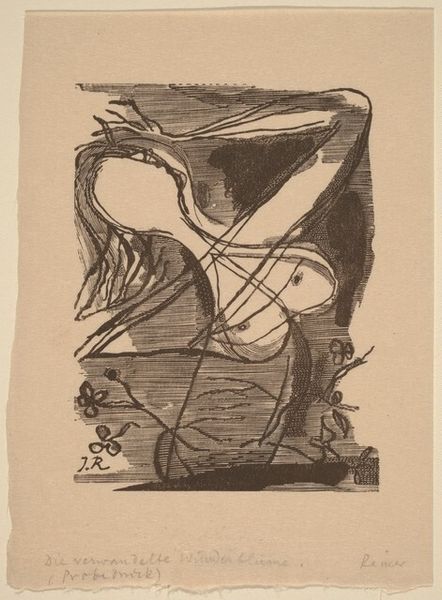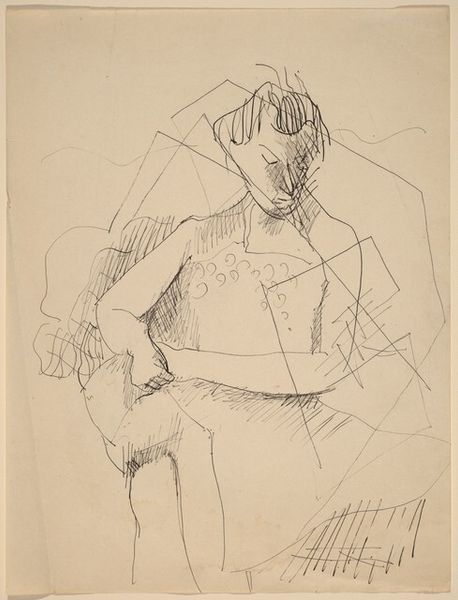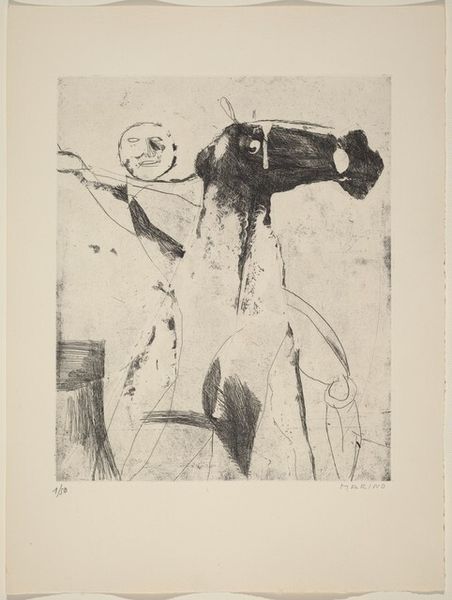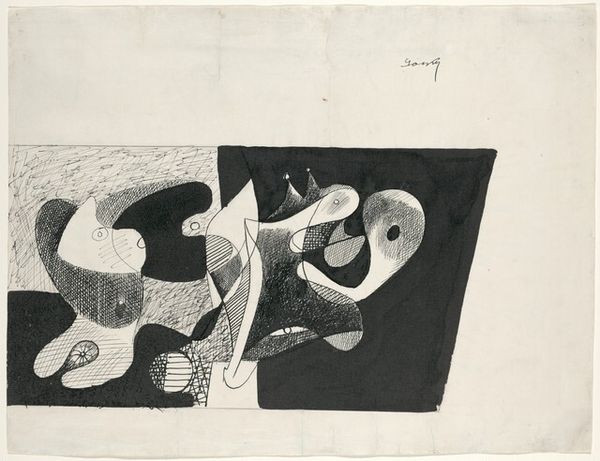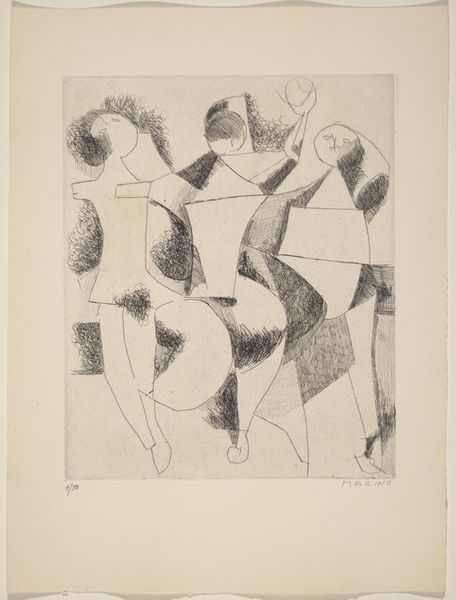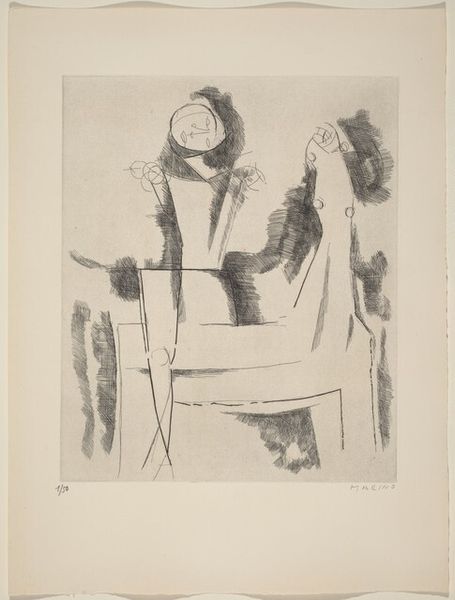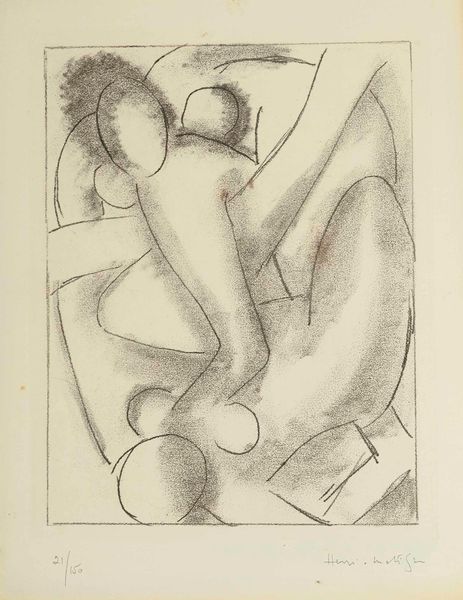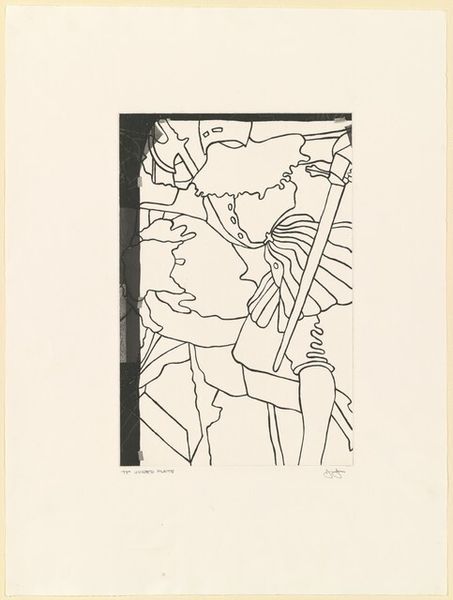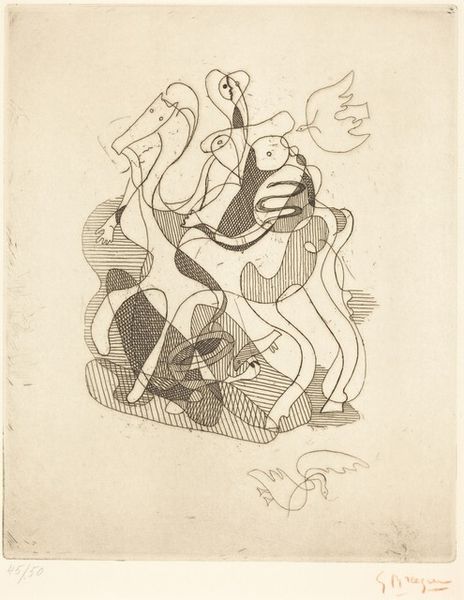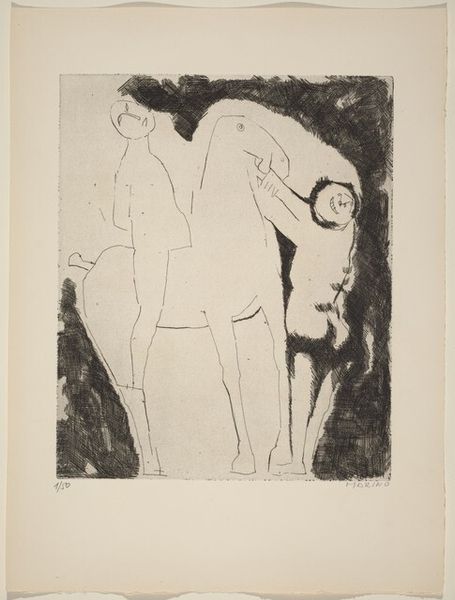
print, ink
#
abstract-expressionism
#
ink drawing
# print
#
figuration
#
ink
#
abstraction
#
line
Dimensions: plate: 35.8 x 29.5 cm (14 1/8 x 11 5/8 in.) sheet: 51.8 x 38.7 cm (20 3/8 x 15 1/4 in.)
Copyright: National Gallery of Art: CC0 1.0
Editor: This is "Composition," a 1961 ink print by Marino Marini. The lines are so angular and frantic—it feels restless and fragmented, almost like a figure in motion. What can you tell me about this work? Curator: Indeed. Look at the use of ink. Do you see how it's both delicate and aggressive? These stark contrasts point toward a tension, perhaps reflecting the post-war anxieties of the time. The abstracted human forms evoke archetypal figures, almost like fragmented memories. Do you notice how the limbs seem disconnected, the heads almost symbolic? Editor: I see what you mean! It's like a distortion of something familiar, but I can’t quite put my finger on it. Is it supposed to represent something specific? Curator: That’s the crux of it. It moves beyond direct representation into a symbolic realm. Abstraction allows Marini to tap into a more universal experience of being. The fragmented forms could symbolize the brokenness and reassembly of identity. Think of how classical ideals were being challenged in that era; perhaps these shapes are visual echoes of that societal shift. What feelings arise when you consider those cultural anxieties embodied here? Editor: It's fascinating how it can reflect such complex ideas using just ink and paper! I hadn't thought about the connection to the cultural climate at all. Curator: It's through the deconstruction of form that we uncover a deeper cultural memory and continuous search for meaning, I find. Editor: I'm definitely going to look at abstract art differently now. Thanks for shedding light on the layers of meaning! Curator: My pleasure. Seeing art through the lens of symbolic language reveals the potent impact and emotional impact of its images.
Comments
No comments
Be the first to comment and join the conversation on the ultimate creative platform.
